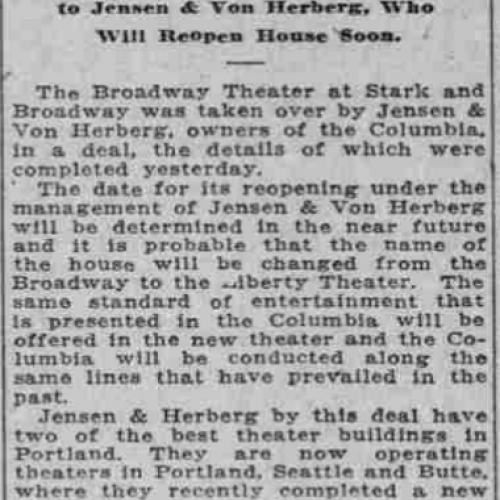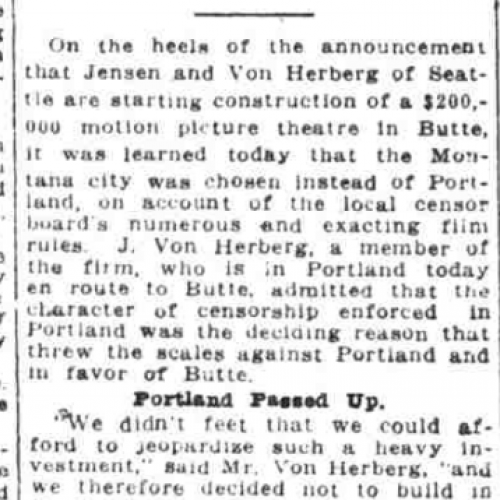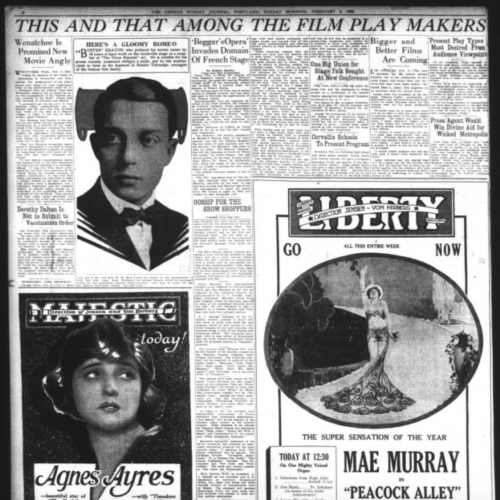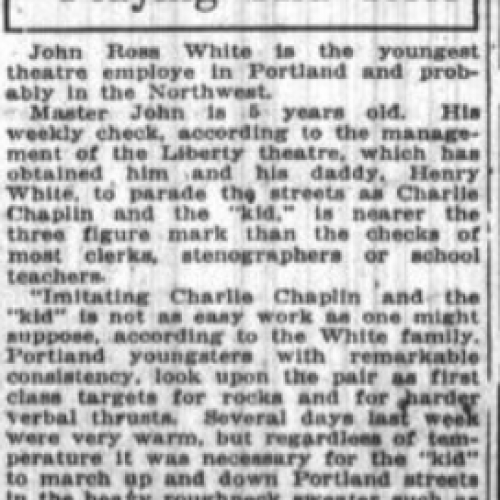The Liberty Theatre was just one name for a theater that saw upwards of ten different names between 1914 and 1959, when it was finally closed and demolished. The theater was originally given the name "Liberty" by Jensen and Von Herberg in 1917. Jensen and Von Herberg were a pair of entertainment business owners who owned the Columbia theatre in Portland as well as multiple theaters in Seattle and Butte, Montana before they purchased the Liberty. Notably, Jensen and Von Herberg were interested in purchasing the theater to increase the size of their circuit as early as 1915, however, Portland censorship policies on films deterred their interest (Oregon Daily Journal, 1916). Still, it was not long until the former proprietor of the theater, E.F. James, surrendered his lease on the building which was then known as "The Broadway Theatre" and Jensen and Von Herberg took charge. Ultimately, the Liberty Theatre would be one of Jensen and Von Herberg's most prosperous ventures as the Liberty was Portland's largest theater devoted exclusively to motion pictures at the time. The pair would hold onto the theater until the late 1920s when the theater was once again sold and renamed “The Music Box," (Vogel).
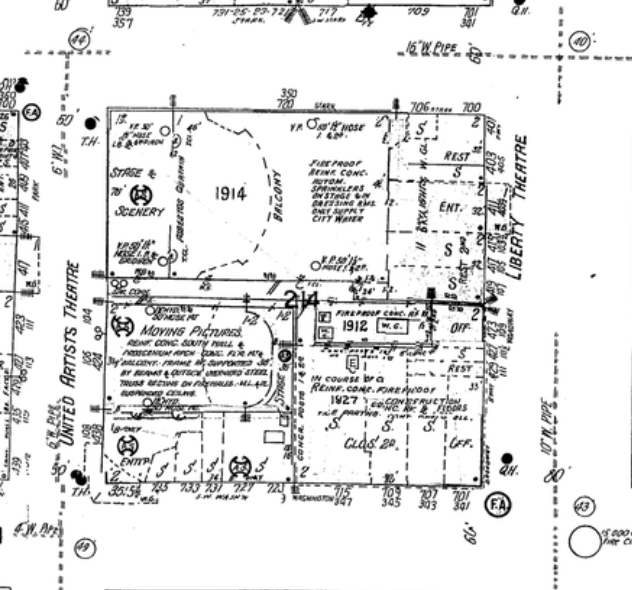
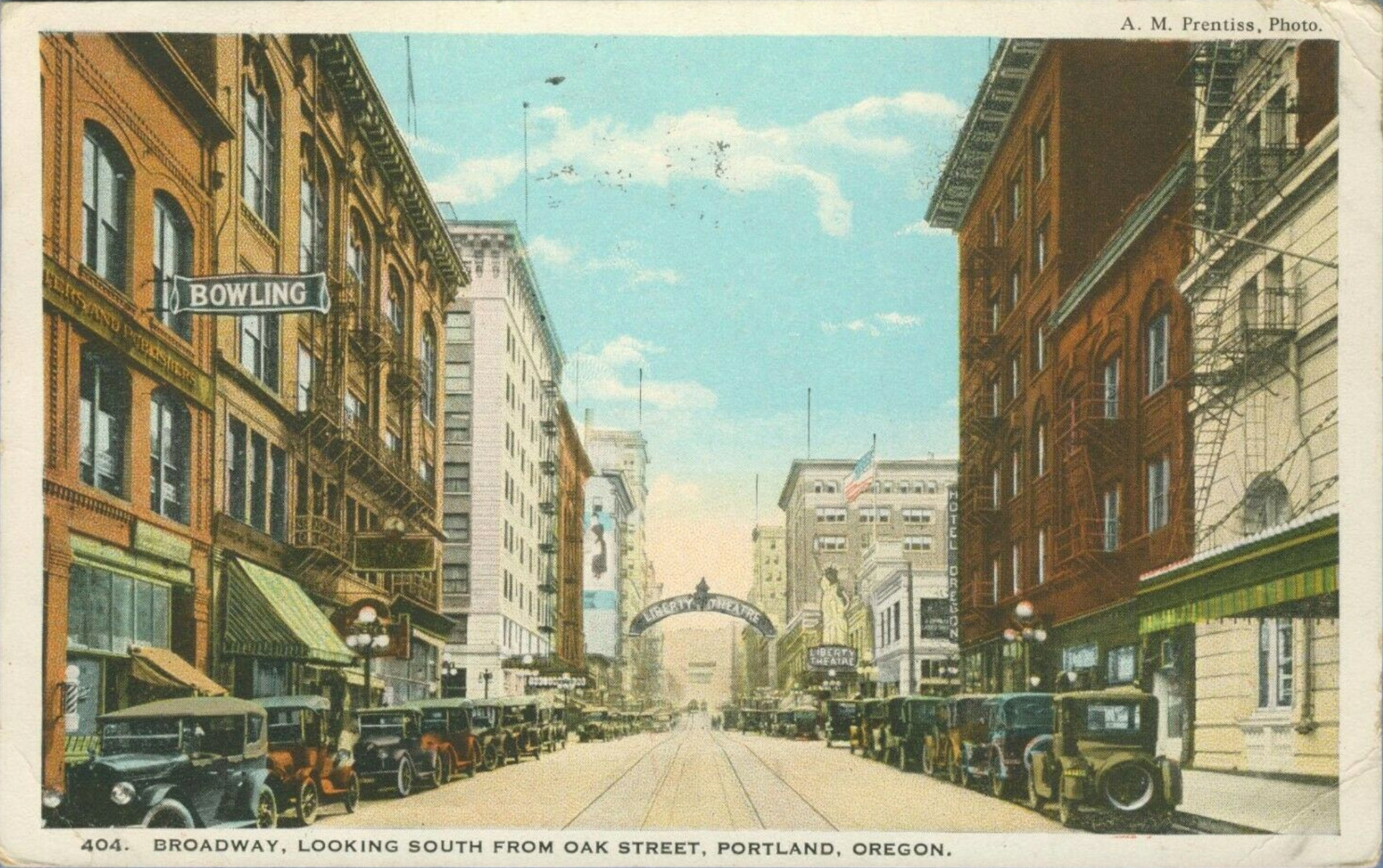
Between 1916 and 1918, the Liberty Theatre had three different Wurlitzer organs installed. Many of the early acts were accompanied by the musical renditions of local professional organ players who would play mainly at special events which often happened during the holidays. The Liberty hosted the most prominent films of the silent era and paid for advertisements on a near-weekly basis which document the theater’s programming. Jensen and Von Herberg were known for incorporating promotional strategies with community involvement. For example, Charlie Chaplin’s “The Kid” was the first film in which Chaplin acted, directed, and authored. This six-part comedy partially fueled Chaplin’s meteoric rise to stardom and “The Kid” is still regarded as a silent-film era classic. This significance was clearly apparent to the owner of the Liberty Theatre in Portland, Oregon, who extended the film’s stay for longer than usual because of its appeal and success. In order to advertise the extended showings, the Liberty Theatre adopted a grassroots marketing strategy that employed a local five-year-old named John Ross White who was paid to dress as Jackie Coogan and wander the streets of downtown Portland in order to promote the film. White was accompanied by his father who was dressed as Charlie Chaplin. Jackie Coogan, who co-starred alongside Chaplin, was one of the first child stars in film history at a similar age to the youngster named John (Oregon Daily Journal, 1921).
